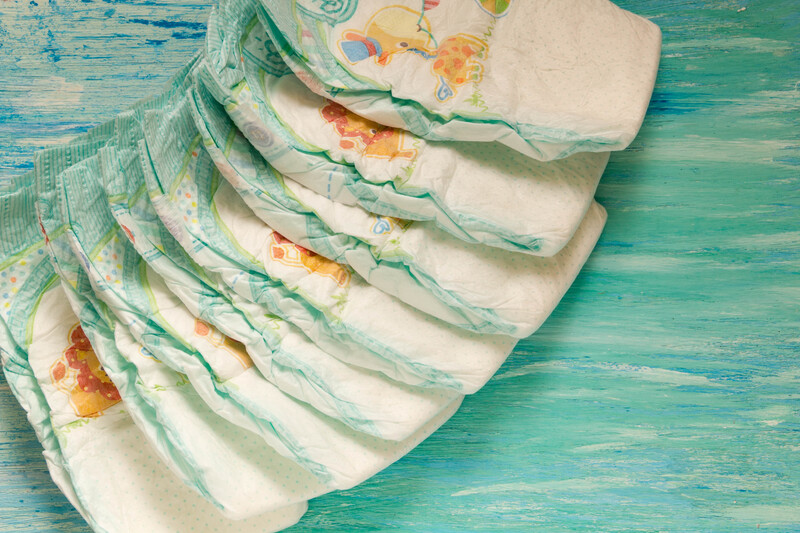What to Know Before Disposing of Your PPE Waste
The demand for Personal Protective Equipment (PPE) has increased drastically over the past few years, primarily owing to heightened health and safety protocols in public, medical, and industrial sectors. As a result, PPE waste disposal has become an essential environmental and public health concern. Understanding the right way to get rid of unused PPE is not only necessary for compliance but also for protecting the planet and the well-being of communities. This guide explores everything you need to know before you dispose of your PPE waste responsibly.

What is PPE Waste?
PPE or Personal Protective Equipment encompasses devices and clothing designed to protect individuals from exposure to hazardous substances and infectious diseases. Common examples include:
- Masks (surgical, respirators, cloth masks)
- Gloves (latex, nitrile, vinyl)
- Face shields and safety goggles
- Protective gowns and aprons
- Shoe covers
- Hair nets and caps
Once used, these items become PPE waste, which can contain contaminants hazardous to humans, animals, and the environment if not handled properly. Whether you are a healthcare facility, a business, or a household, understanding the correct disposal of personal protective equipment is essential for everyone.
Why Proper PPE Waste Disposal Matters
In the wake of the COVID-19 pandemic, improper handling of PPE waste has contributed to several challenges:
- Environmental Pollution: Disposable PPE, especially those made from plastics, are rarely biodegradable. When not discarded correctly, these items can end up polluting landfills, rivers, and oceans.
- Human Health Risks: Used PPE can harbor harmful pathogens, posing risks to waste handlers and the public if mishandled.
- Legal and Regulatory Compliance: Regulations frequently mandate the segregation, collection, and treatment of hazardous waste, including some types of PPE. Failing to comply can result in fines and reputational damage.
Therefore, *understanding ppe waste disposal protocols* is not just good practice--it is a legal and ethical responsibility.
Types of PPE Waste and Their Classification
Not all PPE is disposed of the same way. PPE waste is generally classified into the following categories:
1. Infectious (Biohazardous) PPE Waste
- Definition: Contaminated with blood, bodily fluids, or infectious agents.
- Examples: Masks and gloves used by healthcare workers, protective gowns from hospitals, or any PPE used in treating patients with infectious diseases.
- Disposal Route: Incineration or specialized biohazard waste disposal.
2. Non-infectious PPE Waste
- Definition: PPE used in non-clinical settings, such as general public masks or gloves with no contact with infectious materials.
- Disposal Route: Regular municipal waste, unless local laws demand otherwise.
3. Chemical Contaminated PPE
- Definition: PPE used in laboratories or industry, contaminated with hazardous chemicals.
- Disposal Route: Hazardous waste treatment as per regulatory guidelines.
4. Single-use vs. Reusable PPE
- Single-use PPE: Disposed of after one use (e.g., most surgical masks and gloves).
- Reusable PPE: Should be cleaned and reused according to manufacturer instructions but disposed of when worn out or damaged.
Legal and Regulatory Considerations for PPE Waste Management
Comprehensive knowledge of PPE disposal laws is essential for organizations and individuals generating PPE waste. The regulations surrounding PPE waste vary by location but generally include:
- OSHA Standards: In the U.S., the Occupational Safety and Health Administration (OSHA) requires proper handling, storage, and disposal of potentially infectious materials.
- EPA Guidelines: The Environmental Protection Agency recommends proper segregation and management of medical waste, including used PPE.
- State and Local Laws: Municipalities may have additional rules regarding PPE collection, especially for infectious or hazardous waste.
- International Standards: The World Health Organization (WHO) and similar bodies have published protocols for correct PPE waste disposal.
Before disposing of PPE, always check for the latest guidelines in your region to remain compliant and avoid penalties.
Main Steps for Responsible PPE Waste Disposal
Getting rid of PPE waste properly involves more than just tossing items in a regular trash bin. Here are the key steps for safe and responsible PPE waste management:
1. Identifying and Segregating PPE Waste
- Separate infectious or hazardous PPE waste from regular trash. Use color-coded bins or bags--red or yellow for biohazards, and black for general waste.
- Label containers clearly to indicate the type of waste inside.
- Train staff and household members to recognize and properly separate PPE waste.
2. Containment and Storage
- Store used or contaminated PPE in a secure, puncture-resistant container.
- Use bags that are leak-proof and tied securely before removal to avoid leaks or exposure.
- Restrict access to disposal bins to limit the risk of spread.
3. Treatment Before Disposal (If Required)
- Some PPE waste disposal protocols require disinfection (e.g., using bleach or autoclaving) before final disposal, especially in healthcare or laboratory settings.
- Consult local and institutional regulations to see if pre-treatment is necessary.
4. Final Disposal
- Arrange for a licensed medical waste contractor to collect and treat infectious or hazardous PPE waste.
- Non-infectious PPE can often go to regular municipal waste, but always verify local regulations.
- If possible, choose vendors who utilize environmentally friendly disposal, such as energy recovery through incineration or recycling programs where available.
Can PPE Waste Be Recycled?
The recycling of PPE waste is challenging due to contamination risks, as well as the complex mixtures of plastics and other materials in PPE. However, advancements are being made in the recycling of some PPE items:
- Clean, non-infectious PPE: Some companies offer collection and specialized recycling for items like masks and gloves.
- PPE Recycling Programs: Initiatives such as TerraCycle and certain local government schemes allow drop-off or mail-back of disposable masks and gloves for safe recycling or conversion into new materials.
- Research & Innovations: New technologies are increasingly able to disinfect and process used PPE for renewed use or conversion into energy or construction materials.
Check with your municipality and local waste management agencies for available PPE recycling options.
Do's and Don'ts for PPE Waste Disposal
- Do: Always wear gloves or use hand sanitizer after handling used PPE waste.
- Do: Follow local regulations and guidelines for segregation and disposal.
- Do: Double bag PPE waste if there's a high risk of contamination.
- Do: Educate others on the importance of proper PPE waste management.
- Don't: Throw PPE waste into recycling bins unless it is specifically allowed and clean.
- Don't: Leave used masks or gloves in public spaces--this poses a health risk and a litter problem.
- Don't: Mix hazardous PPE waste with regular trash.
Environmental Impact of Improper PPE Waste Disposal
PPE litter has become a visible global problem. Single-use masks and gloves have been found in rivers, forests, and oceans, where they take decades to degrade. Some of the main environmental hazards include:
- Wildlife Harm: Animals can mistake discarded PPE for food, leading to ingestion or entanglement.
- Microplastic Pollution: Masks and gloves made of synthetic fibers fragment into microplastics, contaminating soil and water.
- Increased Carbon Footprint: Improper incineration or landfilling of PPE adds to greenhouse gas emissions.
These risks highlight the vital importance of following responsible PPE waste disposal practices.
Best Practices for Businesses and Organizations
Whether you run a healthcare facility, factory, school, or office, it's critical to have a solid PPE waste management policy in place. Here's how:
- Create clear guidelines for staff training on the correct use and disposal of PPE.
- Provide labeled bins in key areas for PPE disposal.
- Partner with specialized waste contractors for hazardous and infectious PPE waste removal.
- Monitor compliance through regular audits and feedback.
- Stay updated on evolving local and international waste management standards.
Case Study: Healthcare Facility PPE Waste Management
During the pandemic, hospitals generated an unprecedented volume of PPE waste. Key steps taken included:
- Designating separate storage areas for contaminated waste.
- Regular disposal and frequent transportation to off-site incineration facilities.
- Employee training sessions on safe donning, doffing, and waste handling procedures.
The result was minimized infection risk and strict regulatory compliance.
Tips for Households: How to Dispose of Used PPE Safely
- Double-bag used PPE and tie bags securely to prevent leaks.
- Keep PPE waste separate from regular recyclables.
- Don't flush masks, gloves, or wipes down the toilet--this can cause blockages and environmental pollution.
- Wash your hands thoroughly after handling PPE waste.
- Follow local waste collection schedules and guidelines for PPE disposal.

Innovations and Future of PPE Waste Management
As PPE usage remains high in various sectors, the need for sustainable waste solutions is more pressing than ever. Here are emerging trends:
- Biodegradable PPE: Innovations in materials science are leading to the development of masks and gloves that break down faster and are less harmful to the environment.
- On-site Disinfection Technology: Portable UV and ozone sterilizers can treat PPE waste, reducing volume and infection risks before off-site disposal.
- Advanced Recycling Methods: Chemical recycling can transform used plastics from PPE into fuels or new products.
- Circular Economy Models: Some manufacturers are piloting take-back schemes, where used PPE is returned and processed into new PPE or other useful products.
Summary: Responsible PPE Waste Disposal for a Healthier World
Proper PPE waste disposal safeguards both people and the planet. By understanding the *right way to dispose of PPE*, you help reduce pollution, minimize health risks, and comply with laws designed to keep everyone safe. Whether you are a business, healthcare worker, or individual, take a moment to think before you throw--and always choose responsible procedures for managing your PPE waste.
- Stay Informed: Regulations and best practices change--stay updated.
- Educate Others: Share information on proper PPE disposal in your community.
- Seek Alternatives: Where possible, use reusable and recyclable PPE products.
- Stay Responsible: Together, we can reduce the environmental impact of PPE waste and promote a healthier, cleaner future for all.
If you're ever unsure about the correct disposal of PPE in your location, consult your local council or waste management provider for guidance.
Additional Resources
- CDC PPE Waste Disposal Guidance
- WHO: Infection Prevention and Control - Waste Management
- EPA: Coronavirus and Waste Management
Understanding how to dispose of PPE waste can protect both the world and the people around you. Make proper PPE waste management part of your routine today!
